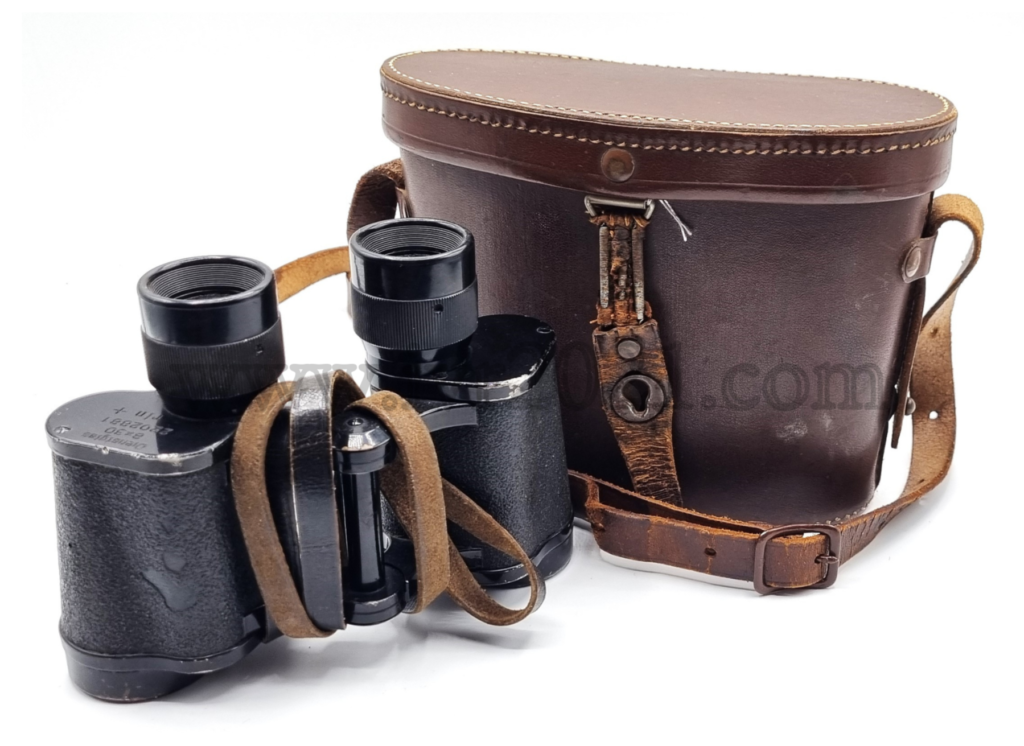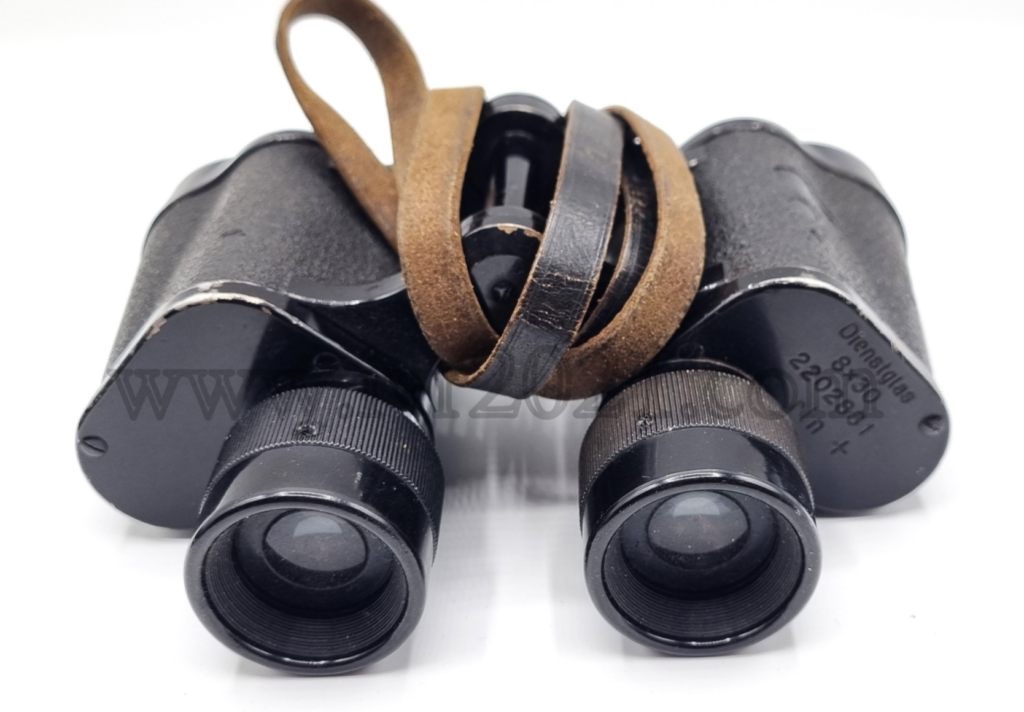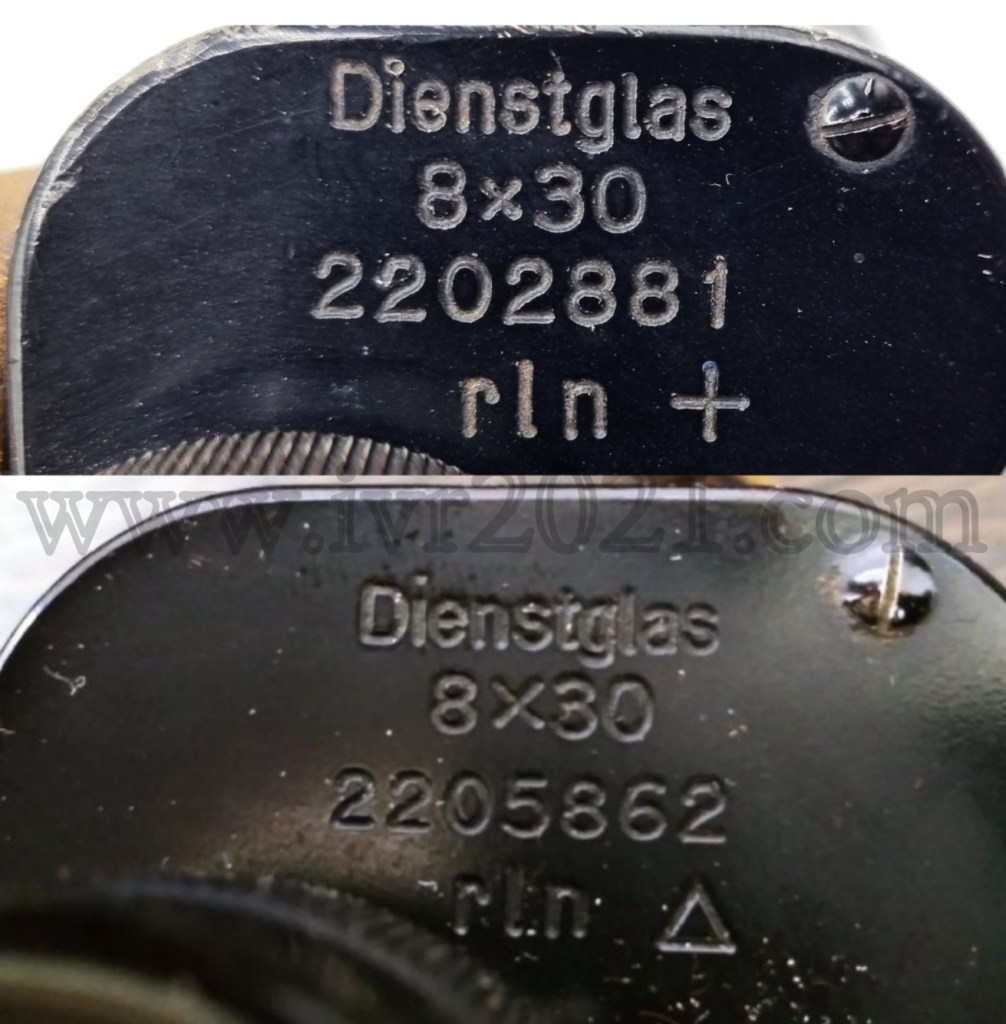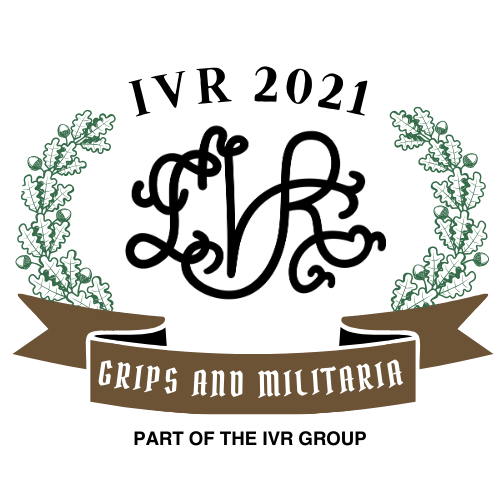
The rln 8×30 Dienstglas binoculars made by Carl Zeiss, are a fascinating piece of military history, their existence is quite mysterious and marked by conflicting details about their production. These binoculars, bearing the factory code “rln,” were purportedly manufactured in 1942, yet several characteristics suggest a later production date. In this post I will try to shine some light on these contradictions.
The Carl Zeiss Factory Codes

During World War II, German manufacturers were assigned secret factory codes to obscure the origins of where military equipment was produced. Before the war, equipment had the factory logo and city visibly marked. In 1939 this changed to a (for the allies) secret ordnance code. Carl Zeiss, one of the best optical manufacturers, used multiple codes throughout the war. Initially, they used “blc,” and later transitioned to “rln.”
DIFFERENCES BETWEEN THE 6X30 AND 8X30 MODELS
The 8×30 binoculars were commercially available well before World War II. They share a nearly identical housing and prism system with the 6×30 models, though the oculars and objectives differ. The eyecups of the 8×30 models are also distinctly different. The similarities between the 6x and 8x model allows for easier repairs using parts from the more common 6×30 models, which is a notable advantage for collectors and restorers.
PRODUCTION NUMBERS AND THE ROMANIAN CONNECTION

According to the serial numbers, approximately 4,500 rln 8×30 binoculars were produced in 1942. Interestingly, these numbers align closely with the Romanian export 8×30 BC nr7 binoculars, documented to have been manufactured in the same year. Both models share the same construction and were issued with a civilian-style case adapted for military use, complete with a WaA202 stamp, indicating Zeiss manufacture.
THE RLN CODE + GREASE CODE PARADOX

The primary mystery lies in the rln factory code, which was introduced in 1944, two years after the supposed production date of these binoculars. Further complicating the timeline are the lubrication marks found on the binoculars. Examples with both a plus (+) and a triangle mark exist, with the switch from plus to triangle occurring in late 1944. This discrepancy suggests a production period around 1944, contradicting the serial number evidence pointing to 1942, while supporting the 1944 production date.
THE MYSTERY OF THE RANGEFINDER
Adding to the confusion is the presence of a rangefinder in the RLN 8×30 binoculars, typically indicated by an “H/6400” marking on the right plate. However, these binoculars lack this marking, which, however, is common in late-war binoculars.
POSSIBLE EXPLANATIONS
Several theories attempt to explain these contradictions:
-
Late 1944 Production: The rln code and lubrication markings support a production date in late 1944. However, this is at odds with the 1942 serial numbers.
-
Post-War Production: Dr. Hans Seeger, an expert on Zeiss binoculars, suggests in his grey book, they might have been made in 1946, using wartime parts. This theory remains controversial and unsupported by solid evidence. Especially with the abundance of wartime markings on the prism plates.
-
Unissued Wartime Production: The condition of these binoculars is usually mint, so It’s possible that a batch of binoculars intended for the Romanian order in 1942 was left unissued. As the war progressed, these binoculars might have been repurposed for the German military, marked accordingly, and stored without being distributed to the front.



Hello!
What kind of range finder (reticle) has this 8×30 Dienstglas? Is that ordinary Dienstglas 6×30 horizontal type, or it is cross type rangefinder? How does look like?
Please, answer to me, it is very important for me!
Thank you very much!
Hello! The 8×30 rln Dienstglas has the exact same reticle (Strichplatte) as any other 6×30/ 10×50 Dienstglas, It is the standard German horizontal rangefinder with 5 and 10 point increments.
Thank you very much!